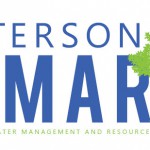New Jersey Future Blog
Sprawl Gets NJ Coming – and Going – via Property Tax
March 30th, 2001 by New Jersey Future staff
Tax Jumps and Sprawl
- A quarter of New Jersey’s municipalities saw their local property taxes jump 40 percent or more in the past decade (139 of 566 municipalities, 1990-99).
- The list includes communities at the leading edges of sprawl, such as Lebanon Township in Hunterdon County (up 62 percent); West Windsor Township in Mercer County (62 percent); South Brunswick Township in Middlesex County (60 percent); Vernon Township in Sussex County (54 percent); Manahawkin/Stafford Township in Ocean County (54 percent); Mays Landing/Hamilton Township in Atlantic County and Montgomery Township in Somerset County (both 42 percent).
- It also includes mature communities at the “trailing edges” of sprawl, such as the Bergen County communities of Fort Lee (up 133 Percent), Saddle Brook (72 percent) and Maywood (54 percent); the Essex County communities of Maplewood (47 percent) and Montclair (41 percent); Morristown in Morris County (51 percent); Flemington in Hunterdon County (57 percent); Cinnaminson in Burlington County (43 percent); and Atlantic City (50 percent).
Many communities on the front lines of sprawl saw their property taxes jump by more than 40 percent in the last decade to cover the costs of providing new roads, sewers, schools and services to spread-out development. At the same time, more mature communities throughout the state were forced to raise their property taxes, often more severely, to compensate for the loss of investment, jobs and residents to newer areas.
This problem is bigger than any single community can overcome on its own. And it’s a no-win game for those that try. Mature communities forced to raise property taxes drive away new and existing investment, and have to raise taxes further. Newer communities that try to stave off property tax hikes by courting additional low-density development find themselves on a treadmill without end.
New Jersey can deal itself a new hand. The options include adopting a statewide property tax, as in Michigan; or reducing today’s property tax with corresponding adjustments to income or sales taxes, or some combination thereof to offset the loss from property tax. Another option is tax sharing.
The idea of municipalities combining a portion of their local taxes into a shared regional pool already exists in the New Jersey Meadowlands, and is also used in regions within New York, Maine, Ohio and Minnesota.
















